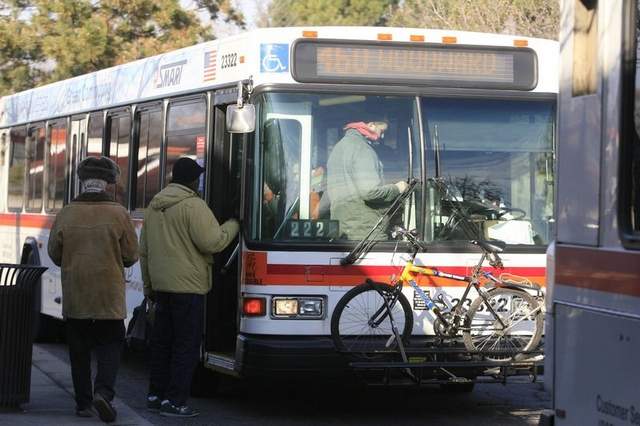Shining a spotlight on transportation and opportunity
Yesterday, as Fast Lane readers probably noticed, the Department kicked off our year-long 50th Anniversary commemoration with a terrific bang: a ceremony that DOTers are not likely to forget very soon. Today, the hard work of the past 50 years continues.
We've dedicated this 50th Anniversary year to a different theme each month, a different aspect of transportation that DOT has been engaged in and continues to advance. So let's start with February and Transportation's Role in Advancing Ladders of Opportunity.

If you're reading this blog post, it probably seems obvious to you that transportation connects people to opportunity. If there's a bus, a road, a sidewalk, a bike lane, a commuter train, or a ferry boat available to them, people can get physical access to jobs and education. Those options need to be safe; they need to be reliable; and they need to be affordable. Ideally, they also need to make mobility easy --a well-maintained sidewalk is great, but we can't expect folks to walk 10 miles to work each day.
One of the things DOT does is work to ensure that Americans indeed have this kind of access. Where it doesn't exist, we try to help communities make it happen --and make it happen in a way that serves the goals of the community. Where it exists but falls short, we try to help communities improve it.
Perhaps less obvious is the fact that good transportation doesn't just connect residents to opportunities outside their community, but attracts opportunities into their community and helps revitalize the community. We have learned, in places big and small from Brunswick, Maine, to Denver, Colorado, that when a community invests in transportation, the private sector invests in the community.
That's why DOT is working with communities to ensure that their transportation investments create the kind of jobs and development they seek. This is not just good for the communities; growing opportunity means a growing economy. So smart, locally driven projects also help American taxpayers get the most bang for their transportation buck.
A third way that transportation --when done right-- can lead to opportunity is through the work of building, operating, and maintaining transportation projects and services. When a community begins to stand up a bus rapid transit system, why not prepare a community-based workforce to find employment in the construction of the stations and dedicated lanes for that system? Why not help local businesses seeking to participate? Why not train local job-seekers to drive the buses or staff the operations center? And why not develop a program where local men and women can learn how to perform the necessary vehicle maintenance?
For DOT, that means workforce development grants. It means support for disadvantaged businesses (DBEs). It means a local hiring initiative.

So, you see that the connections between transportation and opportunity are many, and this Department is actively pursuing ways to take those connections and help communities --wealthy and poor, rural and urban-- make the most of them.
I urge you to stay tuned to the Fast Lane and to www.transportation.gov this month; we've got a lot to say and do on this theme, and we're looking forward to sharing it with you.



Post new comment
Comments